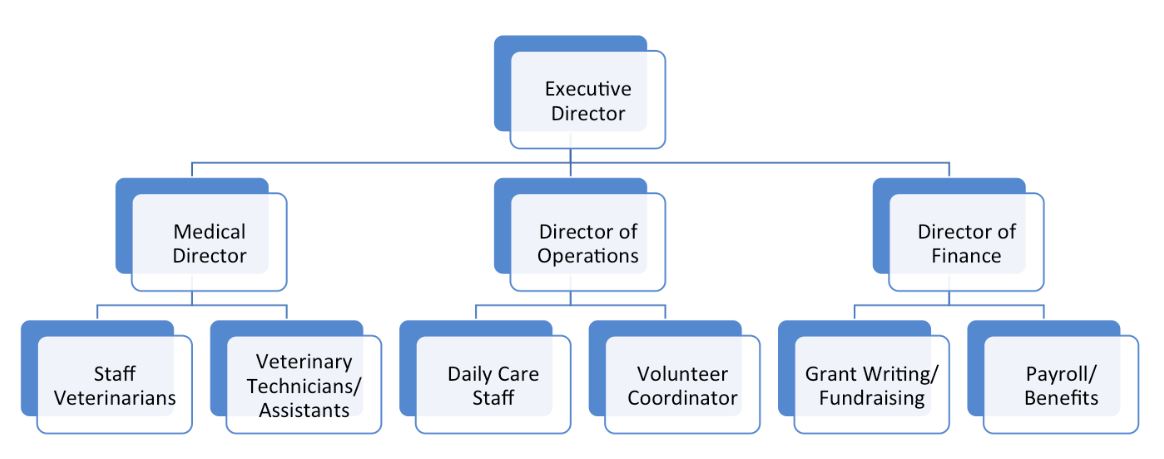Module 9: The Role of the Shelter Veterinarian
Making the Most of the Shelter Veterinarian
Have things changed much a decade after Mr. Avanzino’s call to action? In many shelters, the answer is a resounding, ‘Yes!’ As you’ve heard in several of this course’s recorded Conversations from the Field sessions, veterinarians sometimes occupy positions high in the organizational chart, either as the sole veterinarian or as the medical director over the veterinary care team. These veterinarians have an opportunity to influence every aspect of operations that impacts animal health and welfare, including traditional roles for individual animal treatment and spay-neuter, as well as emerging roles such as population management, disease surveillance, and capacity for care.

However, a survey found that many shelter managers still held the outdated view that the primary role of their veterinarians was to “perform spay/neuter surgery.”
In the report Survey of Animal Shelter Managers Regarding Shelter Veterinary Medical Services, the authors concluded:
“Shelter managers who responded to this survey tended to view the roles of veterinarians in shelters somewhat narrowly, with most prioritizing surgical and medical care to individual pets over prevention of disease and injury.”
Consider the following findings obtained through the survey:
- Every shelter that responded reported a problem in their facility with at least one infectious disease, ranging from parvo to ringworm
- Almost 77% of respondents said common shelter infectious diseases had a substantial negative effect on the shelter’s success
- 86% said these diseases negatively impacted the shelter’s finances
- And yet, veterinarians were reported to be responsible for infection control in only 6% of shelters, with shelter directors usually performing that role
The survey also found that “Providing authorization for purchase and administration of drugs was also ranked as important, likely reflecting the importance of access to controlled substances in shelters. Developing preventive protocols, advising on infectious disease management, serving as witnesses in animal cruelty cases, participation in euthanasia decisions and providing behavioral expertise were given relatively lower priority by most respondents.”
The study concluded, “The expectations of shelter managers in this study seemed particularly divergent from those of the expanding veterinary field of shelter medicine regarding the role of veterinarians in providing animal behavior expertise. The petition for a specialty in Shelter Medicine Practice lists ‘optimization of shelter animal behavioral health’ as one of the major duties of shelter veterinarians. Previous studies have demonstrated links between physical and behavioral health in dogs and cats, and have suggested that an emphasis on behavioral health can help prevent animals from entering shelters, reduce stress and disease in shelter animals, and facilitate adoptions. However, in this study, among the 15 tasks listed in the survey, shelter managers perceived the provision of expertise on animal behavior as the least important task for veterinarians.”

